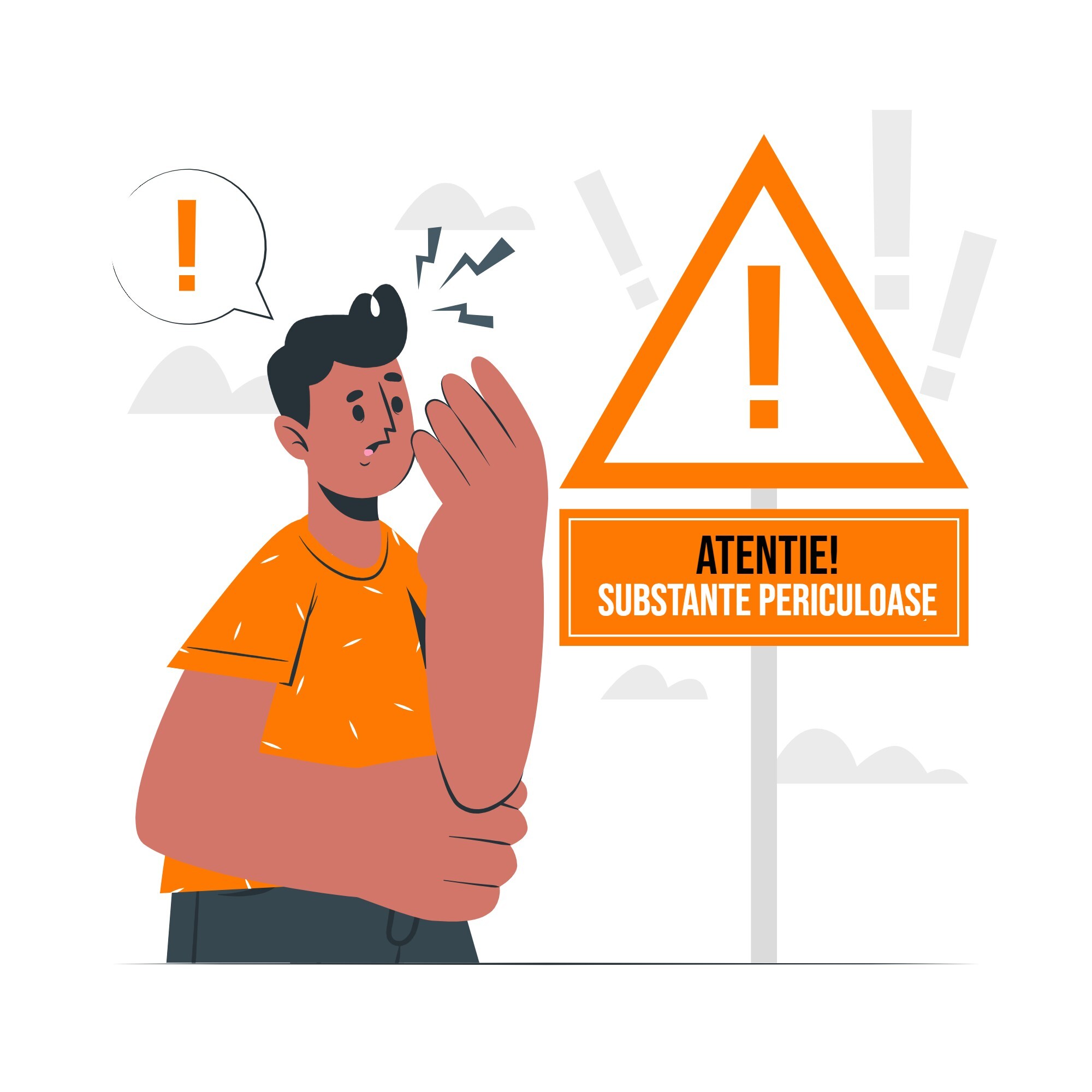Workplace safety is a top priority for any employer, regardless of industry. While some jobs may seem less dangerous than others, there are always potential hazards, even in an office setting. However, with the right measures, these hazards can be minimised or even eliminated. In this article, we focus on some of the most common workplace hazards, including working at heights, blocking emergency exits, electric shock and working with machinery and technical equipment. Read more about workplace accidents here!
Working at height
Working at height can be both physically and mentally demanding. Workers required to work at height must be fit for work at height, mentally alert and able to follow safety procedures. They should also be comfortable with heights and have no medical conditions that could affect their ability to work safely.
Employers should ensure that workers undergo thorough training and are assessed for suitability for the job. It is important to ensure that workers can perform their job duties safely and confidently and that they have the physical and mental capacity to cope with the challenges associated with working at height.
Importance of equipment for working at height
Working at height is one of the most dangerous activities, and falls are a leading cause of serious injury and death. Therefore, it is essential to use equipment for working at height and to take appropriate safety measures.
One of the most important pieces of equipment for working at height is a fall protection system. This can include a harness, a means of attachment or positioning rope and an anchor point, which are used to secure the worker to a stable surface and prevent falls. Of course, it is particularly important that the equipment is fitted and used correctly to ensure maximum protection.
Other equipment for working at height includes scaffolding, ladders and access platforms. These need to be inspected and maintained regularly to ensure they are in good working order. Workers should also be trained in their correct use to prevent accidents.
Workplace clutter
Workplace clutter can cause many accidents, including falls. It can also block emergency exits and prevent access to important safety equipment.
Blocking emergency exits
Blocking emergency exits at work can be extremely dangerous. In the event of a fire, for example, blocked exits can prevent employees from evacuating quickly and safely, leading to serious injury or death. Blocked exits can also impede the efforts of emergency personnel, making it more difficult to control the situation.
Employers must ensure that emergency exits are always accessible at all times. In addition, workers should be trained on the importance of keeping these exits free of obstacles. This is a critical component of workplace safety that cannot be overlooked.
Blocking fire extinguishers
Blocking fire extinguishers is also very dangerous. Fire extinguishers are essential in the event of a fire and can prevent an isolated fire from becoming a major disaster. If fire extinguishers are blocked, workers may not reach them in time and the danger can get out of control.
As an employer, you need to make sure all fire extinguishers are easily accessible. This simple rule can prevent serious injury or loss of life in the event of a fire.
Scattered goods or materials
Scattered goods or materials may present a significant hazard to workers. Slips and falls are common accidents that can result and can lead to various injuries, including fractures and sprains. In addition, they can impede the movement of equipment, increasing the risk of accidents. They should therefore be stored properly and work areas should be kept free of clutter.
Electrocution hazard
Electrocution is a serious hazard that can occur in the workplace. Electrical hazards can exist in many forms, including exposed wires, faulty equipment and overloaded circuits. The human body is a good conductor of electricity, which means that electric shock can easily cause serious injury or death.
Workers who are exposed to electrical hazards must be trained to recognize and avoid these hazards. They must also wear appropriate protective equipment to reduce the risk of electrocution. Of course, employers must ensure that all electrical equipment is regularly maintained and inspected.
Long-term use of extension cords
Extenders are not designed for long-term use. If you use them for a long time, there is a risk of overheating, which can lead to a fire hazard. In addition, extension cords are often used in ways they are not intended, such as running them through walls or under carpets, which can cause damage and increase the risk of electrocution or fire. Extension cords can also become a tripping hazard if not properly secured, which can lead to injury.
Any workspace should therefore provide adequate sockets to avoid the need for extension cords. Also, those used as a temporary solution should be inspected regularly for any signs of wear or damage.
Working with machinery and technical equipment
Working with machinery and technical equipment can be dangerous without adequate safety measures. Improper use of machinery can cause numerous problems, including crushed limbs, amputations and lacerations or death. Employees must be trained in proper use and safety measures, and equipment must be inspected and maintained regularly. You can find out more about obtaining ISCIR authorisation here. It’s also essential to make sure employees are equipped with the necessary personal protective equipment.
Working with hazardous chemicals
Hazardous chemicals can pose serious health risks, including respiratory problems, skin irritations and even cancer. Those handling such substances should be trained in their safe use and storage and wear personal protective equipment when handling them.
Working with devices under pressure
Pressurised devices also present health risks, especially if used improperly. Moreover, their use is prohibited without technical approval and ISCIR verification. Repairs, connections, troubleshooting and other interventions should only be carried out by qualified, trained and authorised personnel.
How can such incidents be avoided?
Workplace accidents can be avoided by regular training, use of personal protective equipment and investing resources in safety measures.
Regular training
Regular training is designed to prevent workplace incidents. By offering regular training courses and sessions, employers can ensure that workers are aware of the hazards associated with their workplace and are equipped with the skills and knowledge to avoid accidents. This training should cover topics such as the safe use of machinery and equipment, proper handling of hazardous chemicals and emergency procedures. Workers who receive regular training are more likely to recognize and avoid potential hazards, which can prevent accidents and injuries.
Consider a regular online training service, an efficient and cost-effective way to provide workers with safety training. This training can be taken at the worker’s own pace and can be accessed from anywhere (assuming they have an internet connection).
Personal protective equipment
Personal protective equipment provides a physical barrier between people and the hazards they face at work. By wearing this equipment, employees can reduce their risk of injury or illness from exposure to hazardous chemicals, machinery and equipment or other hazards.
Equipment may include items such as goggles and visors, gloves, overalls, vests, coveralls, hard hats and protective footwear. Each type of equipment is designed to provide protection against a particular hazard, which is why employers need to provide the right choice.
Resources invested
No matter what type of business you run, investing resources in safety measures will help prevent workplace accidents. Employers who prioritise safety create a culture that emphasises the importance of identifying and mitigating hazards. This can lead to greater employee engagement, improved morale and, of course, fewer incidents.
Investing resources in safety can take many forms, such as providing regular training, investing in safety equipment and tools, and implementing safety procedures and protocols. Employers can also conduct regular safety inspections and audits to identify potential hazards and take corrective action to prevent incidents.
In addition, this simple action can reduce the costs associated with incidents and improve a company’s reputation. As a result, by prioritizing safety, employers can prevent accidents, protect their workers and improve their business.
In conclusion, work protection is a complex and ongoing process for companies. However, it is essential for maintaining a safe and healthy workplace for employees. Implement proactive measures, stay up to date with regulations and promote a culture of safety to prioritise workforce health.



